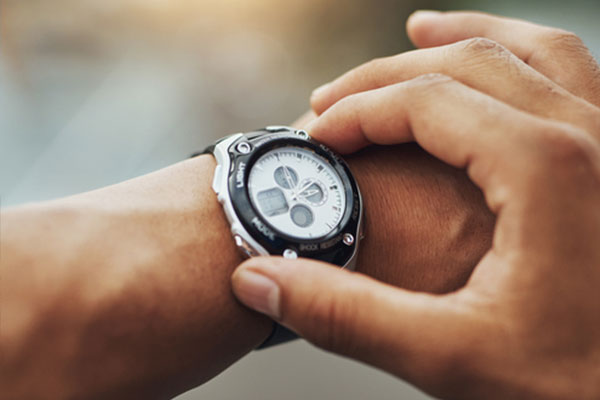Wristwatch buying guide

The wristwatch was invented in the 1600’s when a French mathematician used a piece of string to tie a watch to his wrist.
Timekeeping has come a long way since then. These days, watches are like mini-computers that can forecast the weather, help you find your way in the woods or even get you to class on time.
For professional adventure racer Travis Macy, 23, his watch helps with navigation and keeps his team on track during grueling multi-day races.
“If we’re doing a trekking section and we’re falling asleep on our feet, we’ll stop and sleep for half an hour,” says Macy, a former Cub Scout. “And then the whole race is hanging on my watch to wake us up!”
Dealing with that kind of pressure and the race on the line, Macy knows watches. He can teach you a lot about how to pick the best one for your time-keeping needs.
FEATURES
“Before you go to buy a watch, think about the features you’re looking for,” Macy says.
If hiking and camping is your thing, consider a watch with a compass and perhaps an altimeter and barometer. If you’re into jogging, find a heart-rate-monitor watch. Remember: Just because a watch is packed with features and functions doesn’t mean it’ll be easy to use. Try it before you buy to make sure it’s user-friendly.
ANALOG VS. DIGITAL
Most modern watches use tiny quartz minerals to keep the time. When electrified, the quartz crystal vibrates a reliable 32,768 times per second; those vibrations are translated to seconds, minutes and hours. Analog watches have a standard clock-like face with two or three (or more) hands that point at numbers, which is more classic yet can be tougher to read than digital watches. Digitals continuously highlight the exact time in numerals. Some watches have dual faces with both analog and digital readouts.
DURABILITY
If you spend much time outdoors, durability is a key factor in a watch. “Make sure it’s rugged,” Macy says. “If it has a compass swivel on top, try turning that to see if that feels like it’ll hold up. Play with the buttons. Are they easy to push? Take a look at the band and the buckle to make sure they’re flexible and will hold up to the elements.”
SIZE
You want the face of the watch and the numbers to be big enough so you can see them while you’re riding a bike or running. But in general, the bigger the watch the heavier and bulkier it will be. Try to find a size that’s comfortable.
“If you’ll have only one watch, think about whether you’ll want to wear a big watch to school,” he says. “I wear the same big watch for everything, but I’ve gotten used to it. Some guys will feel more comfortable with something smaller.”
THE WATCHBAND
The way your watch is strapped to your wrist is important. If you’re outdoors a lot, choose a polyurethane band. These bands are waterproof, won’t hold odors and are very durable, but they can also be sticky in hot climates. Another good choice is a canvas and Velcro band, which is more breathable.
“Velcro bands keep your watch snug against your wrist and you can wash it when it’s dirty,” Macy says.
Leather bands don’t perform well in wet environments, but they look cool. Meanwhile, metal bands can sometimes pinch your skin, though they are usually super durable.
WHERE TO SHOP
There’s nothing more helpful than going to a store and trying a watch on to see how it feels on your wrist. Of course, you’ll probably pay more at a store versus buying it on the Internet.
“Take a look online and see if you can find a better price,” Macy says. “There are search engines where you can type in the product name and a whole list of prices will come up so you can find out what’s a good price.”
If you buy online, make sure the store is reputable and beware of counterfeit or fake watches.
Timex Expedition Digital/Analog watch face, AWESOME!!